
Top Agriculture Careers for 2026
December 21, 2025, 7:55 am
The future of food and agriculture faces uncertainties that can serve as a platform for successful agriculture careers.
Some of the uncertainties faced by agriculture revolve around different factors, including population growth, dietary choices, technological progress, income distribution, the state of natural resources, climate change, the sustainability of peace etc.
In the midst of these uncertainties facing food production lies opportunities that can lead to successful agriculture careers for people who are results and solutions oriented. This article highlights these uncertainties and the agriculture careers that they produce.
Top Agriculture Careers
The following are agriculture careers that are best suited to solve the problems that agriculture and food production are facing now and in the future.
- Agriculture Finance

Extreme poverty, measured in terms of the number of people living below the recently updated poverty line of US$1.90 a day (valued in ‘purchasing power parity’, or PPP), has significantly declined since 1990, when almost 2 billion people, or more than 37 percent of the world’s population, were extremely poor.
According to the World Bank, extreme poverty is disproportionately concentrated in rural areas. Across all low- and middle-income countries, a person living in rural areas is almost three times more likely to live in extreme poverty than someone living in urban areas.
Most of the world’s poor and hungry are rural people who earn meagre livings from agriculture, fisheries and forestry. Rural people in most low-income countries rely on agriculture for an important share of their incomes; in some regions, income from agriculture often represents the largest share of household earnings. Family farms are the backbone of agriculture in low- and middle-income countries. Almost 75 percent of these farms, around 375 million, are smaller than one hectare. They engage almost 75 percent of the economically active rural population and produce a significant share of the farming family’s food.
Investment in food and agriculture is one of the most effective means of stimulating economic growth and reducing poverty, especially in countries at a low level of economic development. It is also essential for ending hunger and malnutrition in all of their dimensions – by increasing food production to meet growing demand, by improving the access of vulnerable people to food, and by stabilizing markets so that prices are affordable for consumers and remunerative for producers.
Food and agricultural investments are also necessary to improve the resilience of rural incomes and livelihoods by addressing climate change, conserving natural resources and facilitating the transition to sustainable agriculture.
All the above makes a career in agriculture finance necessary. An agriculture financial expert will identify the available sources of investment funding (international remittance, foreign direct investments, donor agencies, bonds, bank loans, equity investors etc.) and guide farmers and entrepreneurs on how to access them in order to be able to grow and expand their farming businesses.
BECOME AN AGRICULTURE FINANCE PROFESSIONAL
Do you know what current options are available for farmers to help them raise funds and find investors? This finance course goes through the available options in more details and shows you how to explore opportunities in your own country!
- Animal Scientist
The rise of a global middle class, as a result of the fast income growth in emerging countries, has accelerated dietary transitions that are changing the composition of the demand for food. The trend is strongly towards higher consumption of meat and dairy products and other more resource-intensive food items, hence with implications for the sustainable use of natural resources.
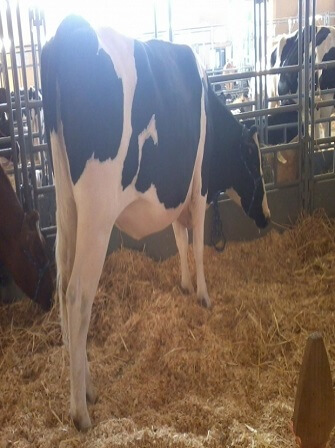
Despite this desire for more animal protein food, challenges such as higher temperatures and less reliable supplies of water will also create severe hardships for small-scale livestock producers, particularly in arid and semi-arid grassland and rangeland ecosystems at low latitudes.
Heat and water scarcity will have a direct impact on animal health and will also reduce the quality and supply of feed and fodder. There is some evidence that global warming has already affected the distribution of some marine fish species, with warm-water species shifting towards the poles.
Both gradual atmospheric warming and associated physical changes (sea surface temperature, ocean circulation, waves and storm systems), and chemical changes (salinity content, oxygen concentration and acidification), have impacts in aquatic environments.
For example, rising sea levels will threaten coastal aquaculture production in river deltas and estuaries. Higher levels of carbon dioxide in the atmosphere are making the oceans more acidic, reducing the ability of important aquaculture species (e.g. mussels, clams and oysters) to form and maintain shells and slowing down or even preventing the growth of coral reefs, which provide an important habitat for fish. These changes can have a major impact on small-scale fishers using traditional methods, with a consequent impact on food security. Furthermore, extreme weather events and sea level rise will damage fisheries infrastructure, such as ports and fleets, further raising the costs of fishing, processing and distribution.
Animal scientist with good understanding of the physiology of animals will be very critical in developing systems that will help animals adjust to the changes in their living environment thereby ensuring regular supply of animal food protein sources.
BECOME AN ANIMAL SCIENTIST
Do you want to know more about animal health and productivity? Then check out our video courses on the common animal protein businesses such as fish farming, cattle farming, poultry farming, grasscutter farming, snail farming and pig farming
- Infectious Disease Controller

Food security is threatened by an alarming increase in the number of outbreaks of transboundary pests and diseases of plants and animals. These pests and diseases jeopardize food security and have broad economic, social and environmental impacts.
Transboundary animal diseases are highly contagious epidemic diseases such as Foot-and-mouth disease (FMD), Newcastle disease etc. that spread rapidly across national borders, causing high rates of death and illness. The risk of serious outbreaks is increasing as more people, animals, plants and agricultural products move across international borders, and as animal production systems become more intensive.
A worrying trend is the upsurge in zoonotic diseases, such as avian influenza and swine flu, which can also have serious repercussions on human health.

The spread of transboundary animal diseases is facilitated by the lack of access to goods and services in rural areas, and the disruption of veterinary services and trade in livestock and animal products. A good example is lumpy skin disease, which affects livestock throughout Africa and is spreading quickly to the Middle East, Asia and Europe.
The impacts of transboundary plant pests and diseases vary from region to region and year to year. In some cases, they result in total crop failure. Globally, annual crop losses to plant pests are estimated to be between 20 to 40 percent of production. In terms of economic value, plant diseases alone cost the global economy around US$220 billion annually and invasive insects around US$70 billion.
Infectious disease control specialists will be in high demand to implement strategies for preventing global outbreak of transboundary pests and diseases.
BECOME AN INFECTIOUS DISEASE CONTROLLER
Learn about infections, their transmission methods, symptoms and preventive techniques in this free online course.
- Soil Scientist
Researches and projections to 2050 suggest the emergence of growing scarcities of natural resources for agriculture. Intensified competition for these resources could lead to their overexploitation and unsustainable use, degrading the environment and creating a destructive loop whereby resource degradation leads to ever increasing competition for the remaining available resources, triggering further degradation. For millions of farmers, foresters, pastoralists and fisherfolk, this could create insurmountable barriers to improving their livelihoods and escaping poverty.
Globally, 33 percent of the world’s farmland is moderately to highly degraded. This degradation affects particularly dryland areas, affecting the quality of local people’s livelihoods and the long-term health of ecosystems. In general, land degradation is an impediment to realizing food security and reducing hunger. Globally, there are few opportunities left for further expanding the agricultural area. Moreover, much of the additional land available is not suitable for agriculture. Bringing that land into agricultural production would carry heavy environmental, social and economic costs.
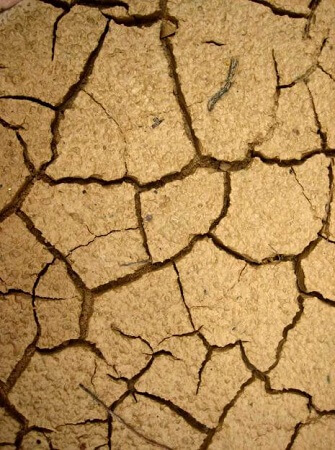
Soil scientists and nutrient expert can help with making existing agriculture land more nutritious and fertile so it can produce more crops. They can also devise ways by which already degraded land can become reusable thereby increasing the quantity of land available for food production.
BECOME A SOIL SCIENTIST
Check out this course that will teach you the characteristics and properties of the soil that contribute to fertile soils and the necessary control measures for pests and weeds
- Food Processing
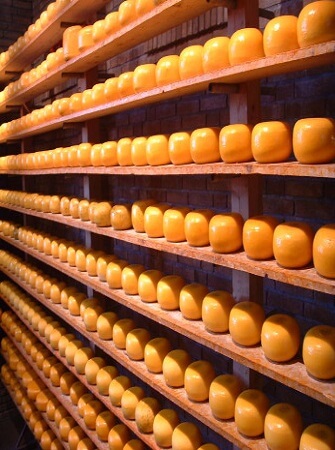
With the increases in food supply in recent decades, the world now produces more than enough food to satisfy the dietary needs of the entire global population. The average DES (dietary energy supply) per person per day in low- and middle-income countries is around 2,750 kilocalories and in high-income countries it is around 3,350 kilocalories. Both these figures exceed the minimum requirement of around 1,950 kilocalories per person per day. The same applies to protein requirements.
However, adequate food availability does not automatically imply adequate food intake by all. First, inequality in incomes and other means of subsistence explain large differences in access to food and why still hundreds of millions of people are undernourished. Second, poorer households tend to face impediments to the adequate utilization of food owing to lack of access to facilities, such as food storage, cooking equipment and clean water, and to services, such as health care and basic nutrition education.
Third, the dietary transition is partially reflected in improved access to more nutritious foods, including meat, dairy products, fruits and vegetables, but not necessary in the right balance. Analyses based on household surveys, as well as the trends shown above based on the FAO food balance sheets, suggest accelerated growth in consumption of meat and slower growth in consumption of fruits and vegetables.
These trends, together with rapidly growing consumption of processed foods, often with excessive quantities of salt, sugar, and preservatives, has given rise to concerns over the shift towards less healthy diets and the increasing prevalence of micronutrient deficiency and overweight.
While population growth increases the demand for agricultural products and stimulates farming activities, urbanization requires food to be easily stored and transported. Thus, food processing has become a key factor in the transformation of food systems.
The world will need more food processing professionals to help convert raw foods into products that have long shelf-life and also convert food wastes in the food value chain into edible products for both humans and animals. They will also be needed for the creation of food products that are more nutritious in order to improve global health.
BECOME A FOOD PROCESSOR
Do you want to start an agriculture career in food processing to solve the problem of food wastage, food value addition and dietary problems? Then take this free course.
- Biomass and Clean Energy Specialist
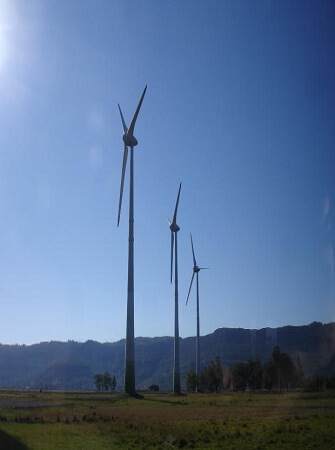
Currently around 14 percent of all energy used globally comes from renewable sources. Around 73 percent of that comes from bioenergy, including liquid transportation fuels and the combustion of municipal solid waste and woodfuel.
Projected demand for bioenergy in electricity generation indicates growth of 50 percent between 2013 and 2020, while bioenergy for heating purposes is projected to grow by approximately 25 percent.
The consumption of cereals and oilseeds for the production of biofuels has increased, as has the use of biomass as a substitute for petrochemicals.
This shift to bioenergy has implications for agriculture and food production. For example, in aquaculture, which provides more than 50 percent of all fish consumed, oilseeds are becoming a major component of fish feed, and demand for oilseeds will expand as aquaculture production methods continue to intensify.
In recent years, there has been a significant increasein the production of biofuels, from around 60 billion litres in 2007 to around 130 billion litres in 2015. Output was projected to grow to 140 billion litres in 2020, with a corresponding impact on the production and consumption of food and feed crops.
There has also been an increased use of vegetable oil for biofuel production. Between 2000 and 2009, the consumption of vegetable oil for all purposes grew at an annual rate of 5.1 percent, while the consumption of vegetable oil for biofuel production grew at an annual rate of 23 percent.
Projections indicate that by 2024, one-quarter of sugarcane production will be used for the manufacturing of ethanol, a 21 percent increase from 2014. The increase in production of these bioenergy crops have led to a conversion of considerable areas of forest into farmland.
The World Economic Forum estimates that, globally, the revenue potential for new business opportunities in the biomass value chain could amount to about US$295 billion in 2020, which is three times its 2010 value. The importance and challenges of sustainable bio-economy development and its transformative role of the agriculture, forestry and fisheries sectors, were recognized at the 2015 meeting of the Global Forum for Food and Agriculture, which gave FAO the mandate to coordinate international work on a ‘food-first’ bio-economy
Recent work by FAO and other organizations has shown that there are a number of good practices that can accommodate the sustainable production of food, bio-based products and bioenergy, including biofuels. They include agro-ecological zoning and complementing the production of food with bioenergy generation through sustainable agriculture intensification.

There is also good potential for developing integrated food-energy systems that optimize land use, such as mixed food and energy crop systems, and increasing the use of biomass for energy (e.g. biogas from livestock manure).
Biomass and clean energy specialists will be in high demand to help with the production of biomass needed for the food and clean energy requirements of the world.
BECOME A CLEAN AND RENEWABLE ENERGY SPECIALIST
This free online course on technologies for clean and renewable energy production teaches you about the concepts of clean energy and renewable energy, as well as the cleaner routes for energy production
- Water Engineering
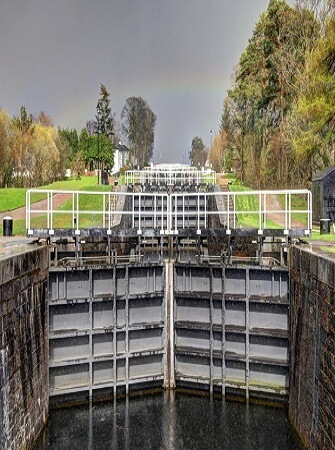
The world faces an impending water crisis and already certain countries are water-stressed. Countries may be considered water-stressed if they withdraw more than 25 percent of their renewable freshwater resources.
Also, countries approach physical water scarcity when more than 60 percent is withdrawn, and face severe physical water scarcity when more than 75 percent is withdrawn. Water withdrawals for agriculture represent 70 percent of all withdrawals. Research estimates that more than 40 percent of the world’s rural population lives in river basins that are classified as water scarce.
In many low-rainfall areas of the Middle East, North Africa and Central Asia, and in India and China, farmers use much of the available water resources, resulting in the serious depletion of rivers and aquifers.
In some of these areas, about 80 to 90 percent of the water is used for agricultural purposes. The intensive agricultural economies of Asia use about 20 percent of their internal renewable freshwater resources, while much of Latin America and sub-Saharan Africa, in contrast, use only a very small percentage
Given these constraints, the rate of expansion of land under irrigation is slowing substantially. FAO has projected that the global area equipped for irrigation may increase at a relatively low annual rate of 0.1 percent. At that rate, it would reach 337 million ha in 2050, compared to around 325 million ha in 2013. This represents a significant slowdown from the period between 1961 and 2009, when the area under irrigation grew at an annual rate of 1.6 percent globally and more than 2 percent in the poorest countries. Most of the future expansion of irrigated land is projected to take place in low-income countries.
Growth in agricultural water use is decelerating, partly owing to the improved performance of irrigation systems and agricultural practices. However, with rapid urbanization, the demand for water is becoming more and more spatially concentrated. Competition for water, and the construction of dams and diversions that interfere with fish migration, can have also a major impact on inland fisheries.

While allocations of water are shifting away from agriculture to meet the needs of urban users, there is still room for improving these allocations in both economic and environmental terms. In this regard, finding non-competing uses of water resources, such as using treated urban wastewater for irrigating crops, will become increasingly important. There may be some scope to further exploit water resources, such as rivers and lakes, to increase food production through the development of inland aquaculture.
It is expected that aquaculture will continue to expand in the decades ahead through intensification, species diversification, expansion into new areas (such as offshore marine waters), and the introduction of innovative, more resource-efficient technologies. Thanks to these improvements, output from aquaculture – having become the major source of fish for human consumption in 2014 – is expected to overtake total output from capture fisheries from 2021.
Water engineers are therefore needed to conserve and maximize existing water sources, produce purification systems for converting waste water into clean water suitable for human consumption and agricultural purposes.
BECOME A WATER ENGINEER
Learn about practices and global issues involved in soil and water conservation engineering in this free online course
- Robotics

As agriculture adopts labour-saving technologies, agricultural employment is expected to shrink, with both women and men moving into other sectors.
However, while men may diversify out of subsistence farming or out of agriculture altogether, women in many low-income countries may continue to work in agriculture. This has led to concerns about the feminization of agriculture.
A recent background review by the World Bank and FAO assesses the available evidence of the feminization of agriculture globally. In many countries in the Near East and North Africa, Central Asia, South Asia and Latin America, the female share of agricultural employment has increased significantly in recent decades, and women have become the majority of those employed in the sector.
The striking rise in women’s responsibilities in agriculture is driven by demographic pressures and land fragmentation; the intensification of agriculture, which affects demand for male and female labour; jobs growth in other sectors; and social norms around women’s responsibilities
As for the men who remain in agriculture, there’s going to be a rise in their ages because younger men will not be going into agriculture at a high enough rate to replace the men already in the profession.
These two trends demand the creation of more tools and equipment that will handle the laborious tasks of agriculture. An easy solution to this growing problem will be robots.
Agriculture robots will be able to solve all the hard labor of farming that previously used to be done by younger men and they should be simple and easy to control so that it can be easily understood and operated.
BECOME A ROBOTICS EXPERT
This free online diploma course in robotics unravels the fundamentals of this field, starting with its history before moving onto the various applications and laws of robotics.
- Agriculture Trade & Marketing

Despite the generally fast growth of agricultural trade, most of the food consumed in many countries is produced domestically; net imports are within the range of 0-20 percent of the domestic food supply in many instances.
Some countries, such as Argentina, Australia and the United States of America, have net exports of more than 50 percent of their domestic food supply, while the Near East/North Africa region imports more than 50 percent of its food supply. Sub-Saharan Africa, South Asia and China are also net importers of food.
Future levels of food prices depend, among other factors, on how production will be able to accommodate tightening resource constraints and climate change. Climate change may jeopardize the possibility of expanding agricultural yields in some regions of the globe, which is required to meet growing demand; the result would be upward pressure on prices.
In addition, mitigation policies may require the internalization of carbon-emission costs. Furthermore, prices in the long run may also rise, as long as there will be a need to reduce GHG emissions in order to comply with international agreements on climate change. However, adopting these mitigation measures would impose additional costs (at least in the short run), which would put upward pressure on output prices.
While some regions of the world experience high food prices due to inadequate food production, other parts of the world have lower food prices due to excess food production. Effective marketing and trade will be needed to create a symbiotic relationship whenever these disparities occur.
Agriculture Marketers and Trade specialist will be needed to create and take advantage of food price disparities around the world in order to ensure that farmers always receive adequate compensation for the items produced on their farms.
BECOME AN AGRICULTURE MARKETER
Explore digital marketing such as the AIDA marketing funnel and email marketing strategies to sell your agriculture products with this free online course
- Meteorologist

The past 30 years has seen a rising trend in the occurrence of natural disasters. This increase is particularly noteworthy in climatological events such as droughts, hydrological events such as floods, and meteorological events such as storms.
The increase in weather-related events is of significant concern to agriculture, given the sector’s dependence on climate. The intensity of these disasters is increasing, and it may continue to increase as climate changes. For some regions, climate change will result in more intense precipitation, leading to more floods, longer dry periods between rain events, leading to more drought. Droughts are expected to intensify, especially in the subtropics and low- and mid-range latitudes.
For example, the 2015/16 El Niño phenomenon was one of the strongest observed over the last 50 years, and its impacts were felt worldwide. Several severe tropical cyclones affected the Pacific Islands and Southeast Asian countries throughout the 2015/16 cyclone season.

An FAO report on the impact of disasters on agriculture and food security showed that, between 2003 and 2013, the agriculture sector in low-income countries absorbed 22 percent of the impact of natural disasters, including total economic damage to physical assets and infrastructure as well as losses due to changes in economic flows.
Agriculture’s share rose to 25 percent when only climate-related disasters are considered, and up to 84 percent in the case of drought. Production losses suffered by producers in the aftermath of a disaster were twice as high as the direct damage to agricultural assets and infrastructure.
Agriculture Meteorologists will become more important in the coming years as they will be able to interpret, predict and analyze weather conditions that will direct farming activities in certain regions based on their understanding of the prevalent weather conditions.
BECOME A METEOROLOGIST
Study the basics of meteorology, natural hazards, climate change and mitigation strategies in this free online course.
- Agriculture Extension
The IPCC is moderately confident that agronomic adaptation can improve yields by the equivalent of 15 to 18 percent. However, the effectiveness of adaptation varies by context. Specific social and environmental conditions will influence smallholders’ choice of adaptation measures. It is important to note that current adaptation measures to improve yields may have different impacts as the climate changes.
The adoption of sustainable land, water, fisheries and forestry management practices by smallholder agricultural producers will be crucial to efforts to adapt to climate change, eradicate global poverty and end hunger. Such practices could yield significant productivity improvements.
However, in order to encourage adoption, improvements will also be necessary in infrastructure, extension, climate information, access to credit, and social insurance – conditions which are at the heart of rural development.
Face-to-face extension services are being complemented, and sometimes replaced, by mobile phones, the Internet and more conventional media, such as radio, video and television. In many countries, extension services have evolved away from top-down ‘technology transfer’ to participatory and discovery-based approaches that inspire innovation.
Agriculture Extension worker will be in high demand as they will be at the forefront of spreading current sustainable and advanced agriculture practices to farmers in rural and urban areas so that food production and security can be achieved globally.
- Agriculture Biotechnology

In its latest assessment, the IPCC has stated with high confidence that in low-latitude countries crop production will be ‘consistently and negatively affected by climate change’. In northern latitudes, the impacts on production are more uncertain; there may be positive or negative consequences.
Increasing variability of precipitation and increases in the frequency of droughts and floods are likely to reduce yields in general. Although higher temperatures can improve crop growth, studies have documented that crop yields decline significantly when daytime temperatures exceed a certain crop-specific level.
Climate change may affect the nutritional properties of some crops. Research has found that under conditions of elevated levels of carbon dioxide, the concentrations of minerals in some crops (e.g. wheat, rice and soybeans) can be up to 8 percent lower than normal. Protein concentrations may also be lower, while carbohydrates are higher.
Agricultural biotechnology will help the world better prepare crops to withstand drastic weather conditions that affect crop growth and production.
Agricultural biotechnology, defined as ‘any technological application that uses biological systems, living organisms, or derivatives thereof, to make or modify products or processes for specific use’ can make a significant contribution to productive and sustainable agriculture. Biotechnologies range from low-tech approaches, such as artificial insemination, fermentation techniques and biofertilizers, to high-tech approaches and advanced DNA-based methods, such as genetically modified organisms (GMOs).
BECOME AN AGRICULTURE BIOTECHNOLOGIST
This free online course takes you through the role of biotechnology in agriculture and animal breeding
- Agriculture Insurance
Agriculture is affected by a rising trend in the number and intensity of natural disasters worldwide
The vulnerability and exposure of individuals and their communities to the impacts of natural disasters depends on a range of factors, including gender, age, socio-economic status and ethnicity. The impacts are often different for men and women, primarily because of gender-determined socio-economic status.
Agriculture subsectors can be affected differently by natural hazards and disasters. Crops tend to be most affected by floods and storms; livestock is overwhelmingly affected by drought; the fisheries subsector is most affected by tsunamis and storms such as hurricanes and cyclones, while most of the economic impact on forestry is caused by floods, storms and wild fires.
Agriculture insurance will help develop financial products that farmers can use to protect their losses from weather and other natural disasters.
BECOME AN AGRICULTURE INSURANCE PROFESSIONAL
This free risk management course will teach you about the importance of insuring against risk and explore the most prevalent types of insurance policies and insurers
- Legal and Conflict Mediator

Conflicts are a major driver of food insecurity and malnutrition. They reduce food availability, disrupt access to food and health care, and undermine social protection systems. Every famine in the modern era has been characterized by conflict.
These conflicts are complex by nature. They can be triggered or amplified by climate-related natural disasters and the impact that these have on poverty eradication and food security. Natural disasters tend to trap vulnerable people, in particular, in a cycle of poverty because they are less resilient and lack coping capacity.
The end of the Cold War led to a dramatic decline – more than 60 percent below peak levels – in interstate and societal conflict during the 1990s and into the 21st century. While a growing global population might be expected to provoke an increasing number of violent conflicts, this was effectively inverted between 1995 and 2003. However, the prevalence of conflicts has increased markedly since the early-to mid-2000s, due to the rapid emergence of several factors at both international and national levels.
The main drivers of conflicts include ethnic and religious differences, discrimination and marginalization, poor governance, limited state capacity, population pressure, rapid urbanization, poverty and youth unemployment. Drivers of conflict specific to the agriculture and rural sectors include competition for land, water and other natural resources, food insecurity, environmental mismanagement, and government neglect of poor and marginalized areas, such as arid and semi-arid zones essential for livestock-dependent populations and subsistence fishing grounds.
Conflicts in rural areas, especially civil conflicts, can heavily affect agricultural production and livelihoods. Vulnerable people and at-risk communities lose access to the range of resources necessary for food and agriculture production, through the seizure of natural resources and displacement from land, homes, fishing grounds and grazing areas. Denials of access, as well as the destruction of food stocks, which are increasingly used as tactics of war, are in direct violation of international humanitarian and human rights laws. Countries with the highest levels of undernourishment tend to be those engaged in, or recently emerged from, violent conflict.
A worrying trend is that the impacts of conflict-induced food insecurity are no longer limited to specific countries or regions, but have become global. In 2015, more than 65 million people worldwide were forcibly displaced, the highest number since the end of the Second World War. Forced displacement is a crisis affecting mainly low-income countries, which host 89 percent of refugees and 99 percent of internally displaced persons. At its root are the same 10 conflicts that every year since 1991 have accounted for the majority of forcibly displaced people, who are consistently hosted by about 15 countries and who are overwhelmingly in the developing world.
Conflict mediators with a good understanding of the legalities of land use and other natural resources that impact food production will be needed to mediate and resolve conflicts in time before they escalate to dangerous levels.

BECOME A LEGAL AND CONFLICT MEDIATION PROFESSIONAL
Using case-studies and real life examples, this free course will give you a strong understanding of the legal system.
- Elder Care Specialist

While, in general, world population growth is slowing down, in some regions population will continue to expand well beyond 2050 and even into the next century. More people now live in cites than in rural areas, and this discrepancy is projected to increase as population grows. Urbanization has been accompanied by a transition in dietary patterns and has had great impacts on food systems.
As a whole, the world population is growing older. Ageing is now also accelerating in low-income countries, where the process tends to start earlier and is becoming more pronounced in rural areas. Urbanization and ageing will have important repercussions on the agricultural labour force and the socio-economic fabric of rural communities.
Global population growth is slowing, but Africa and Asia will still see a large population expansion.
Rapid population growth changes the population structure, with younger generations making up an increasing share of the overall population. Between 2015 and 2050, in low- and middle-income countries, the number of people between 15 and 24 years of age is expected to rise from about 1 billion to 1.2 billion. Most of these young people are expected to live in sub-Saharan Africa and South Asia, particularly in rural areas, where jobs will likely to be difficult to find.
In the coming decades, the world is likely to be not only more populous and urban, but also demographically older. This is not a new trend. From 1950 to 2015, the share of children below the age of five declined from 13.4 percent to 9.1 percent, and the proportion of older (65+) people rose from 5.1 percent to 8.3 percent. This development is expected to accelerate. By the end of the century, the share of young children could decline to 5.8 percent, while the proportion of older people is forecast to rise to 22.7 percent.
Ageing in rural areas tends to start earlierand proceed faster than national averages would indicate. Rural ageing has major implications for the composition of the rural labour force, patterns of agricultural production, land tenure, social organization within rural communities, and socioeconomic development in general.
Environmental degradation, climate change and limited agricultural technology tend to affect older farmers more than their younger, healthier and better-educated counterparts. The disadvantages faced by older farmers may be compounded by discrimination against older rural people in accessing credit, training and other income generating resources.
In countries where the agricultural labour force is ageing, the adaptation of farming technologies and agricultural policies to the capacities and needs of older farmers could help to keep older people engaged in productive activities. In areas experiencing ‘compressed ageing’, the provision of social services may involve the adaptation of social support systems to accommodate the new age structure.
Elder care professionals will be needed to cater to the wellbeing of the ageing farming workforce. These older farmers will need nutritional and therapeutic guides that will help them better cope with the demands of farming.
BECOME AN ELDER CARE PROFESSIONAL
In this course learn how to treat people suffering from various mental and physical health conditions, as a result of ageing and traumatic injuries
- International Relations Professional
Since the challenges facing food and agriculture are interconnected, addressing them will require integrated policy approaches at national and international levels. Designing such approaches will not be easy, given the past performance of sector-specific policy-making and the deficiencies in global and national governance mechanisms, regulatory systems, and monitoring and accountability
The 2030 Agenda for Sustainable Development and related global agreements stress the interdependence of the challenges facing the global community on the path to sustainable development. They recognize the need to combine diverse actions to achieve linked objectives and that this combination will place new technical demands on policymakers at all levels and new demands on institutional arrangements and coordination at various levels of governance.
The related challenges include: combining instruments implemented at different levels of governance in ways that are mutually reinforcing, while containing inevitable trade-offs; and capitalizing on synergies among the Sustainable Development Goals (SDGs) and related targets, among different sectoral policies, and among the diverse stakeholders at local, municipal, provincial, national, regional and international levels.
More inclusive governance will be needed to improve dialogue about the hard policy choices to be made. It is crucial to avoid the marginalization of the poor, who lack the political force to influence decisions, and progressively engage them in the development process
Growing competition over natural resources can cause the rural poor to be dispossessed of the very foundation of their livelihoods, especially in protracted crisis situations and conflict and disaster-affected areas. A key governance challenge is ensuring the recognition of the poor’s formal and informal rights of access to, and use of, natural resources through implementation of voluntary guidelines on the responsible governance of tenure of land, fisheries and forests, and through support to the realization of the right to adequate food.
Other areas requiring improved governance include: financing for inclusive food and agriculture development; meeting employment and migration challenges; addressing shortfalls in the multilateral trading regime in relation to food and agriculture systems; and providing open access to data and statistics to enhance the role of all stakeholders in governance.
Intellectuals with sound understanding of international relations will be needed for addressing the need for coherent and effective national and international governance to coordinate solutions to agriculture problems.
BECOME AN INTERNATIONAL RELATIONS EXPERT
This free online international relations course will improve your skills in addressing contemporary global issues
REFERENCES
The Future of Food and Agriculture: Alternative Pathways to 2050 (FAO)
The Future of Food and Agriculture: Trends and Challenges (FAO)
Water Use in Livestock Production Systems and Value Chains (FAO)
Impacts of Climate Change on Fisheries and Aquaculture (FAO)
OECD-FAO Agricultural Outlook 2021 - 2030
The Impact of Disasters on Agriculture: Addressing the Information Gap (FAO)

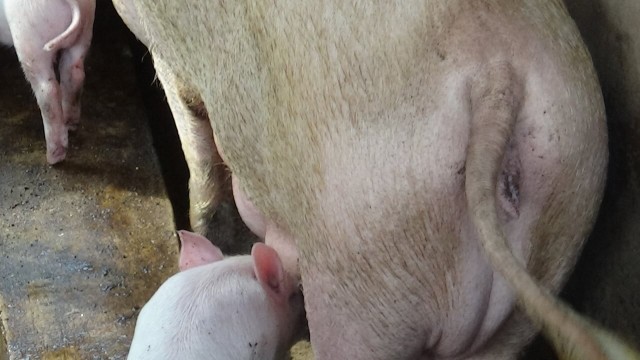
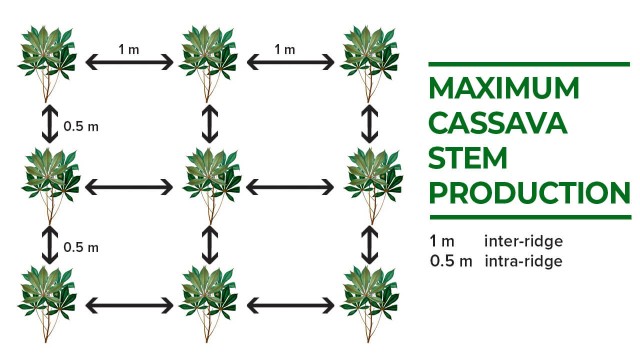



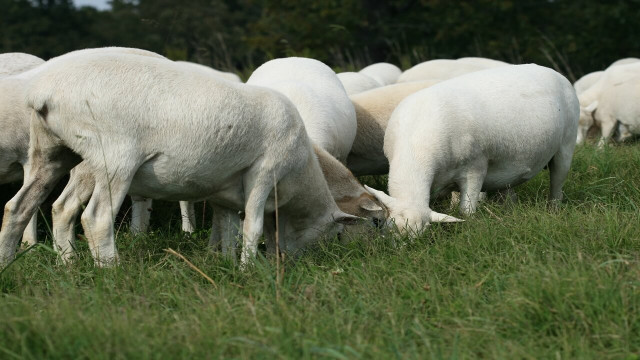

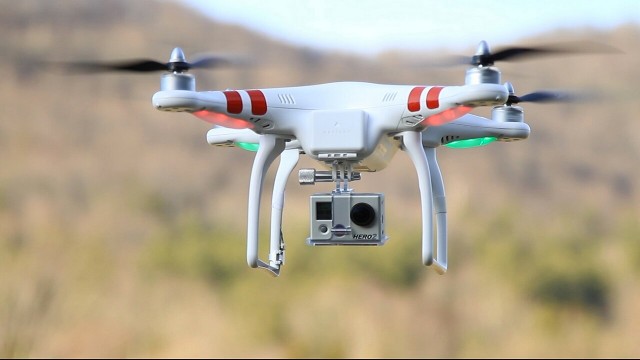
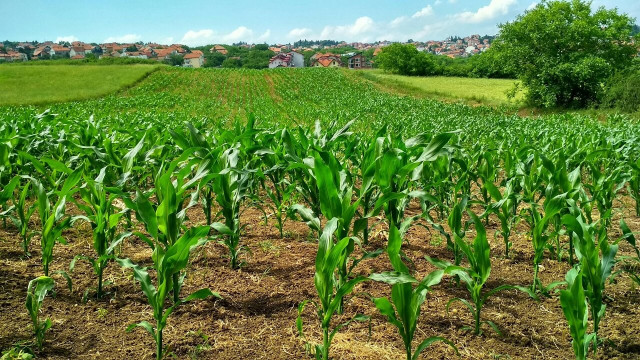


Share This Article: